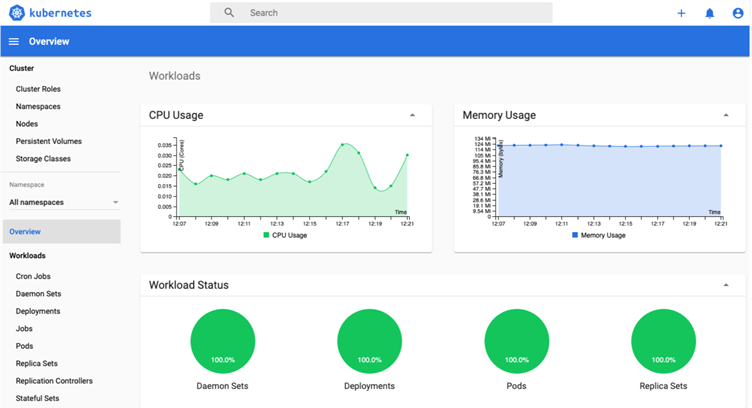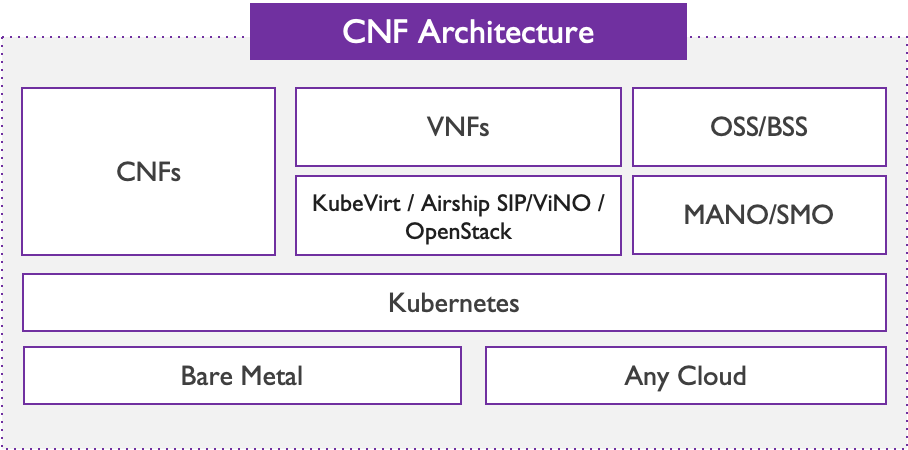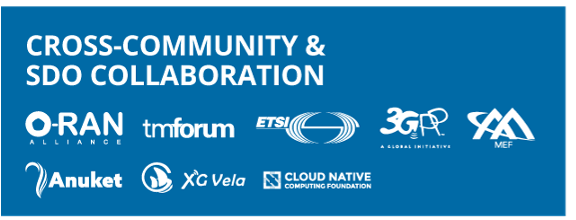| Info | ||||||||||
|---|---|---|---|---|---|---|---|---|---|---|
|
Table of Contents maxLevel 2
ONAP Cloud Native Journey
Plan and Next Steps
- Align ONAP Community on its role and relationship to the Cloud Native ecosystem
- TSC Task force initiated to define on ONAP’s CNF strategy including
#1 What benefits ONAP itself gained by going cloud native
#2 How we want ONAP to enable CNFs (hybrid, ONAP Lite)
#3 What ONAP's value proposition is in the overall LFN family (ONAP/CNTT/OPNFV etc.
- Include “ONAP-CNCF” to the CNCF Cloud Native Interactive Landscape.
- Discussion being kick-off with LF (Arpit Joshipura)
- Promote ONAP’s CNF strategy through LF Events (ONES, DDF etc.) and press release(s)
- CFP submitted for ONES NA
- First implementation of ONAP CNCF as part of the Guilin Release (Nov 2020?)
OVP / Cloud Native Journey
2/12 (presented by Arpit): VNF-CNF OVP - 2 key slides.pptx
2/27 (updated deck with Ciaran, Ranny, Seshu, Timo, Alla): VNF-CNF OVP - 2 key slides_V3.pptx
2/28: (updated deck - orange box is now generic - was previously missing SDC ): VNF-CNF OVP - 2 key slides_V4
3/3: (updated with CNF Task Force): VNF-CNF OVP - 2 key slides_V5
Role of ONAP
Role of ONAP (which is a central automation platform) across multiple Clouds & Edges.
- Distributed Applications: Telco world is known to have requirement to support ‘network services’ whose components (VNFs today) spread across multiple computing regions (Openstack based regions). Hence, the need for central orchestrator that orchestrates various VNFs of the network service in multiple openstack based computing regions. With edge-computing, even normal applications are becoming distributed, where a few microservices of the application are deployed across multiple edges & a few in network edges and public clouds. Essentially, applications are becoming more like network services.
- Convergence of applications and network functions due to Edges : Edge world can’t afford to have two computing environments – One for normal applications and another one for network functions. This is due to resource constraints. Since many edge-computing efforts in Industry adopted K8s, it is natural to think about supporting network functions and use same K8s cluster for both. It appears that a few MEC applications even require some network functions to be deployed along with them (Example include MEC applications with network security functions).
- Network function deployments and life cycle management are more complex than the applications due to need for supporting multiple interfaces, provider networks, service function chaining. ONAP is solving many of these challenges.
- Support for Multiple Cloud technologies : Supporting legacy Openstack deployments with greenfield K8s deployments are needed. ONAP solves these multi-cloud challenges.
- Support for Telco infrastructure such as OSS/BSS – ONAP is already in the path to support various MEF standards on its north side to support standardization between OSS/BSS and Orchestrators.
- Support for monitoring of distributed applications and closed loops : Monitoring distributed applications that are deployed across multiple edges/clouds is complex. There is need for showing the comprehensive status at the application level instead of at each resource level. ONAP monitors the services/distributed-apps and not only provides simpler view of the status, but also can run through various analytics engines and even act on the actionable insights.
Note: ONAP4K8s is a profile of ONAP for Enterprise/IOT (Including Private-5G/LTE) market that have requirement of deploying CNFs/VNFs along with normal applications in multiple K8s based clusters.
In addition, we believe that ONAP can provide additional values as follows:
#1 NF Control Loop
#2 NF Common Inventory
#3 NF Data collection and analytics
#4 Support of PNFs
#5 Cover the design of services as well as the orchestration of services, design of control loops
#6 Play a role in terms of standardizations (TMForum, ETSI ZSM, MEC etc.) through our ONAP Technical Coordinators
To recap, we can provide significant automation values to handle applications on top of the K8S environment.
Areas of Focus
#1 ONAP 'Light" Weight - Review our current ONAP projects (see Lifecycle review led by Jason/Chaker)
#2 ONAP4K8S, Containerization
#3 Identify ONAP Requirements + to support CNFs for Guilin
#4 E2E Integration (OVP)
#5 VNFREQS => CNFSREQS - Certification CNF requirements - need to align with the ONAP Architcture + ONAP SECCOM regarding Cloud Native.
Features/Capabilities - How We complement each other to support CNF?
ONAP CNCF
CNF Scalability
From an Orchestration perspective: Cluster Autoscaler, HPA and VPA
Handling within its own cluster
From an Automation, Control Loop (CL) perspective
OOF, SO, Multi-Cloud
CL (DCAE, Policy, CLAMP + Triggered Action)
Adding value: Handling multiple K8S, Clusters
See "SO enhancements to support CNF" presentation (3/17)
CNF Resiliency
From an Orchestration perspective: K8S Services
From an Automation, Control Loop (CL) perspective
OOF, MSO, Multi-Cloud
CL (DCAE, Policy, CLAMP + Triggered Action)
See "SO enhancements to support CNF" presentation (3/17)
Onboarding/Provisioning
Design Time
SDC/VID/CDS
Secured service-to-service communication
Additional SW to be uploaded on top of K8S:
Linkerd, ISTIO,
AAF
(VNFs only)
Integrate our ONAP Apps to Service Mesh while keeping AAF as optional
Service Mesh between ONAP/CNFs
Do we provide any certificate or shall we rely on a Certification Manager?
Logging
Stackdriver Logging
Elasticsearch
Fluentd
Logging/Pomba
EELF/ELK
Dashboard
Observability
Events, Alarms, Analytics
Prometheus - https://prometheus.io/
Open-source systems monitoring and alerting toolkit
Jaeger - https://www.jaegertracing.io/
As on-the-ground microservice practitioners are quickly realizing, the majority of operational problems that arise when moving to a distributed architecture are ultimately grounded in two areas: networking and observability. It is simply an orders of magnitude larger problem to network and debug a set of intertwined distributed services versus a single monolithic application.
based on grafana technologies (UI part)
Specific VES
Integration with Promotheus and Grafana technologies (UI) as POC by AT&T
-Check the CNF Conformance to understand what are the requirements
-Shall we integrate one of the open sources to DCAE (like we did with PNDA) or shall we create DCAE CNCF version?
Inventory
CNFs Storage
- Secured mechanism to store/inject CNF images (Extension to Artifactory - Separate virtual repos)
CNF Inventory
A&AI could also be used for Control Loop (future feature candidate?)
CNF Security Requirements
Ingress Controllers
How to address Networking back to provider network
Expansion of Container Security for K8S (out of scope from SECCOM?)
OpenTelemetry provides a single set of APIs, libraries, agents, and collector services to capture distributed traces and metrics from your application. You can analyze them using Prometheus, Jaeger, and other observability tools. - https://opentelemetry.io/
CNF Compliance:
The CNF supports OpenTelemetry-compatible tracing
– Does the CNF generate Open Telemetry compliant data?
– Is there traffic to Jaeger?
Dual Stack Network:
- IPv4 K8s cluster with IPv4 pods and services
- IPv6
We need to understand what role does ONAP play for CNF networking. Is it exposed to CNI plugin choice? Multiple interface containers? etc.
- DPDK
- SRIOV
(CNF Taskforce Meeting Minutes - 2021 and older)
Table of contents:
| Table of Contents |
|---|
1. Problem statement and scope
This Taskforce focuses on two main topics
- ONAP as an orchestrator for network services consisting of cloud native network functions - CNFs (as well as VNFs and PNFs)
- ONAP's architecture evolution as a cloud native application
1.1 CNF Orchestration
1.1.1 Evolving from VNFs to CNFs
1.1.2 ONAP as a CNFO
- Hybrid services CNF/VNF/PNF, leveraging open-source
and standards- Support Greenfield and Brownfield environment
- E.g., CNF on bare-metal, CNF on VM, VNF on VM, PNF
- Day 0/1/2 configuration
- Not just infrastructure orchestration
- Configuration and Update
- Standard alignment (ETSI, 3GPP) and beyond (ASD)
- Evolve existing investment, no need to start from scratch
- Common Infrastructure for model/package onboarding, design and distribution
- Support both ETSI-Aligned and Cloud Native Orchestration
- 5G slicing use case – 3GPP compliant
1.2 ONAP as a Cloud Native application
1.2.1 Relationship with SDOs
1.3.1 ETSI-NFV - Alignment on packaging
ETSI NFV SOL001 v4.2.1 based proposal
1.3.2 O-RAN Alliance
- Application Service Descriptor (ASD) - the modelling and packaging approach for CNFs, rAPP/xApps.
- O-RAN: ASD solution
1.2.2 Alignment and integration with other Open Source Projects
- EMCO
- CNCF - K8S
- 5G Super blueprint
- Anuket
2. Work accomplished and available functionality
2.1 Jakarta
- Formalization and approval of the ASD concept - https://wiki.lfnetworking.org/display/LN/2022-01-12+-+ONAP%3A+Application+Service+Descriptor+%28ASD%29+for+K8s+NFs
- Link to the approved ASD specification - Application Service Descriptor (ASD) onboarding Information Model, ver. 1.0.
- CNF Orchestration scenarios - https://wiki.lfnetworking.org/display/LN/2022-06-DD+-+ONAP%3A+CNF+Orchestration+Scenarios
- ONAP integration with EMCO (PoC) - https://wiki.lfnetworking.org/display/LN/2022-06-DD+-+Virtual%3A+General%3A+ONAP+EMCO+integration+and+Demo
2.2 Istanbul
- Deployment maturation and Day2
- Improvement of Helm Distribution (SDC/SO)
- Helm Deployment Maturity
- Helm package validation
- Helm 3.5
- Helm pre-/post-installation/deletionhooks
- Simple CNF Healthcheck
- Basic AAI CNF Changes
2.3 Honolulu
3. Future roadmap
- Nephio integration
- Support for 5G Super Blueprint & Magma CNF orchestrations requirements
- New joint onboarding package to design the NS with CNFs
- Merging the paths of the Native Helm & ETSI flows
- Enhance the CNF resource orchestration functionalities further
- Multi-cluster deployment with inter-cluster connectivity setup
- CNF Upgrade
- Coordinated CNF components deployment
- Runtime model evolution based upon the standard
- AAI persistence of the CNF resources
- Control loop enhancements for CNFs
- Cluster management and CNF observability (integration with XGVela)
- Prometheus based monitoring in DCAE
4. Getting started
4.1 Documentation
End user section
- ReadTheDocs https://docs.onap.org/projects/onap-ccsdk-cds/en/latest/usecases/vfw-cnf-use-case.html?highlight=cnf#
- Wiki - This space
- vFW use case - https://docs.onap.org/projects/onap-integration/en/istanbul/docs_vFW_CNF_CDS.html
- Latest release notes - https://docs.onap.org/en/latest/release/index.html
Developer section
- documentation
- Jira items in progress for the current release
4.2 Demos
- Recording from June 2021 DDF
- ONAP: Orchestration of xNF Based 5G Service
- ONAP: CNF Orchestration Tutorial
5. FAQ
Q: What is the value-add of ONAP for CNF orchestration (CNFO)? What does it provide on top of K8S?
A:
- hybrid config and data operations can work on both K8s and PNFs
- Can manage helm charts
- Handling multi-cluster deployment on top of K8S
- ONAP works in the service level, not just the resource level
- Still need to address coordination across different clusters and SW upgrades
Q: What can end users do with ONAP Honolulu? What operations are supported (service design? Deployment? Day-0 configuration? Day 1/2 configuration? LCM?), and what will be supported in Istanbul?
A:
- For the "native helm" path - on-boarding, Helm enrichment with CDS, meaning modifying values in Helm templates.
- Day 2 operation config-assign/config-deploy - add/modify resources after the initial deployment, which may be used for upgrade.
- CNF status checking is supported in Honolulu, will be enhanced in Istanbul.
- SO merged the "native helm" and "ETSI" paths for a more 'Plug&Play'
Q: What is the format of CNF packaging? Is it based on Helm? Does it follow ETSI-NFV specifications?
A:
- packaging - SOL04 may need a bit of work still. Descriptors are still being discussed in ETSI about containerized models. Lots of discussion but no consensus yet. Orchestration meetings on Mondays 8am Eastern
- Packaging is based on the CSAR format (for both the 'helm native' and 'ETSI' Format
- CNF Descriptor Proposal page: https://wiki.onap.org/x/VwsqBg
- Magma CNF onboarding is following similar path than what we have implemented for CNF vFW
Q: Where is the documentation for CNF on-boarding and deployment?
A:
- Documentation of the vFirewall CNF use case: https://docs.onap.org/projects/onap-integration/en/honolulu/docs_vFW_CNF_CDS.html
- Heat/Helm/CDS models: vFW_CNF_CDS Model
- Automation Scripts: vFW_CNF_CDS Automation
Q: How should end users report issues
A:
- You can create a JIRA ticket - https://jira.onap.org/
- You can post any question on the #integration-team channel in the onapproject.slack.com Slack instance
- You can also join the CNF Task Force, every Thursday prior the ONAP TSC Call (1pm UTC) calendar link
- You can also write to the onap cnf mailing list - onap-cnf-taskforce@lists.onap.org
Q: Are there "CNF requirements" available in ONAP, similar to the "VNF Requirements"?
A:
Where are we on the CNCF Trail Journey?
CNF Deployment
#1 Workload Considerations - POD and Host Strategies
- Separate POD
- Shared POD
- Shared Host (with VNFs)
#2 HW Requirements
- Persistency
- Performance Optimization (Compute, Storage) - Generic or Special HW?
- Multi-Tenancy @Storage, Networking, Resource maangement
- Security - check with SECCOM
#3 Testing Considerations
- Canary Testing - Rolling upgrades
- Chaos Monkey Testing
- Performance
Pre-requisite(s)
- Is there any available CNF that we could use to prototype/test with "ONAP CNCF"?
- Check this link about CNF Testbed-https://github.com/cncf/cnf-testbed
- Check with OPNFV - if any investigation in this area
Requirements
We need to identify non functional reqs for ONAP Itself and for ONAP to orchestrate CNFS
(Rework the below reqs into these two categories)
#1 Need to deploy ONAP/ONAP CNCF on component basis not as a whole
#2 Move to Service Mesh
#3 Optimization of DB - leverage some storage, DB capabilities offered by existing Cloud solution
#4 Scalability, Reliability based on K8S services (?).
Not replacing K8S but built on top of K8S.
#5 API between components
Later on, how our "ONAP CNCF" will look like to support CNFs
First Use Case(s) for Guilin (Initial proposals)
- Helm 3 is supported in Honolulu (maintenance release). Helm hooks are not fully supported.
- CNF Descriptor Proposals:
- x/VwsqBg
- Architecture Review: [ONAPARC-709] (Istanbul-R9) - Func - CNF Orchestration – Istanbul Enhancements
Q: How could developers get involved? Where do you mostly need help? Are there open Jira tickets people can start working on?
A:
- Call for developers to implement in Jakarta new features:
- CNF Control Loop
- Integration with XGVela
- Merging Native Helm/ETSI flows
- Entreprise use cases
- etc
- Istanbul CNF Orchestrator Requirements: REQ-627 - ONAP CNF orchestration - Istanbul Enhancements DONE
- Those are the short term goals. Have a great deal more in the backlog for future released. refer to 2021-06-09 - ONAP TSC Taskforce: Cloud Native (Roadmap)
Q: What it is not supported today and is part of the roadmap?
A:
- Control loop, DCAE, A&AI, ASD implementation, Prometheus integration with VES, and more. Refer to 2021-06-09 - ONAP TSC Taskforce: Cloud Native (Roadmap)
Q: What do we need to ask to CNF Vendors to be onboarded on the ONAP Platform?
A:
- Vendors are welcome to test their CNFs, so we can have the solution validated with a larger set of Network Functions
- Security container logging requirement 2021-06-09 - ONAP: SECCOM activities for Istanbul release
Also original presentation to ONAP TSC- 2021-02-22_LoggingRequirementEvents_v8 (1).pdf
Q: What has changed in CNF packaging since Frankfurt?
A:
- In Frankfurt, the Helm chart was a 'second class citizen' in SDC. In Honolulu there is native support for Helm charts. SO understands Helm type now.
Q: Is there a plan to support NETCONF configuration, or will the solution be limited to CDS CBAs? Is there alignment with C&PS?
A:
- No integration with C&PS, but it may happen at a later stage. But this is a good approach and may be discussed further in the CNF Taskforce.
Q: Does the CNF Orchestration support only Openstack VF-Module?
A:
- VF Module is the design aspect of the SDC, we represent each helm with a VFM. The current processing is per VFM for CNF as it is with the other resources
Recent Presentation Material
2022-01-13 - ONAP: Orchestration of xNF Based 5G Service
2022-01-12 - ONAP: ASD and Application Onboarding and LCM Orchestration
2022-01-12 - ONAP: Application Service Descriptor (ASD) for K8s NFs
2022-01-11 - ONAP: CNF Orchestration Tutorial
2021-10-12 ONE-Summit_Cloud_Native_Service_Orchestration_ONAP v0.4.pptx
2021-06-08 - ONAP TSC Taskforce: Cloud Native (Demos)
2021-06-09 - ONAP TSC Taskforce: Cloud Native (Roadmap)
2021-06-10 - ONAP TSC Task Force: Cloud Native (Ask Us Anything)
Links
https://github.com/kubernetes-sigs/kubefed -- K8S across multiple clusters
https://pivotal.io/cloud-native
https://techbeacon.com/app-dev-testing/5-critical-elements-building-next-generation-cloud-native-apps
https://medium.com/faun/15-best-practices-to-design-cloud-native-modern-applications-a2aa9f19cda0
https://hackernoon.com/writing-sky-high-applications-a-guide-to-cloud-native-development-9f3c1c020471
https://codilime.com/vnfs-in-cnfs/
https://wiki.lfnetworking.org/display/LN/OVP+2.0+Boot+Strap










